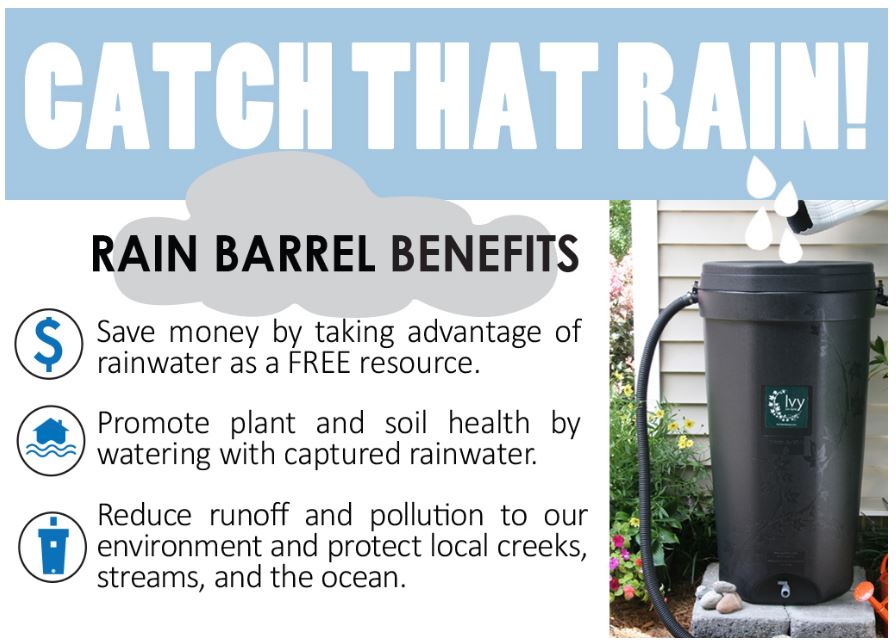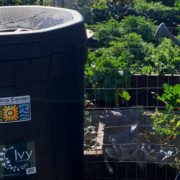Water Districts Offer Discounted Rain Barrels
Due to the persistence of California’s unprecedented megadrought, capturing rainfall when it occurs is a conservation priority. Several water districts in North San Diego County are offering discounted rain barrels.
To encourage water conservation as drought conditions persist, the Olivenhain Municipal Water District, Carlsbad Municipal Water District, San Dieguito Water District, and Santa Fe Irrigation District, are offering discounted rain barrels to area residents.
Collecting rainwater for future use saves both potable water and consumer costs. Capturing rainwater also reduces irrigation runoff that can carry pollutants into local waterways and beaches. This is especially true in the “first flush” of the rain season currently underway.
Capture the rain
Fifty-gallon barrels are on sale for $97, with a final cost of $62 after a $35 rebate from the Metropolitan Water District of Southern California. Rebates on rain barrels and other water-saving measures are available at www.SoCalWaterSmart.com.
Rain barrels ordered through November 30 will be available for pick up at the Solana Center for Environmental Innovation at 137 North El Camino Real in Encinitas. Visit the Solana Center’s website for more information and to place your order.
Rain barrels conserve water for Watersmart landscape maintenance
Although San Diego County’s average rainfall in normal seasons is just under ten inches annually, even light rain can provide enough water for later use. A roof with a 2,000-square-foot surface area can capture 300 gallons from only a quarter inch of rain.

Stored water can be released gradually into Watersmart landscaping between winter rainstorms, building up the soil sponge and ensuring that native plants get adequate water during the winter months when they need it most. If you need additional water in the summer and capture enough of it during the winter, you may be able to use your stored water for supplemental irrigation.
Rain barrels are inexpensive to purchase and easy to install. Practice pest management and use screens to prevent mosquito breeding. With minimum maintenance and common sense, the water can be kept safe.
(Editor’s note: The Olivenhain Municipal Water District, City of Carlsbad, San Dieguito Water District, and Santa Fe Irrigation District, are four of the San Diego County Water Authority’s 24 member agencies that deliver water across the metropolitan San Diego region.)



